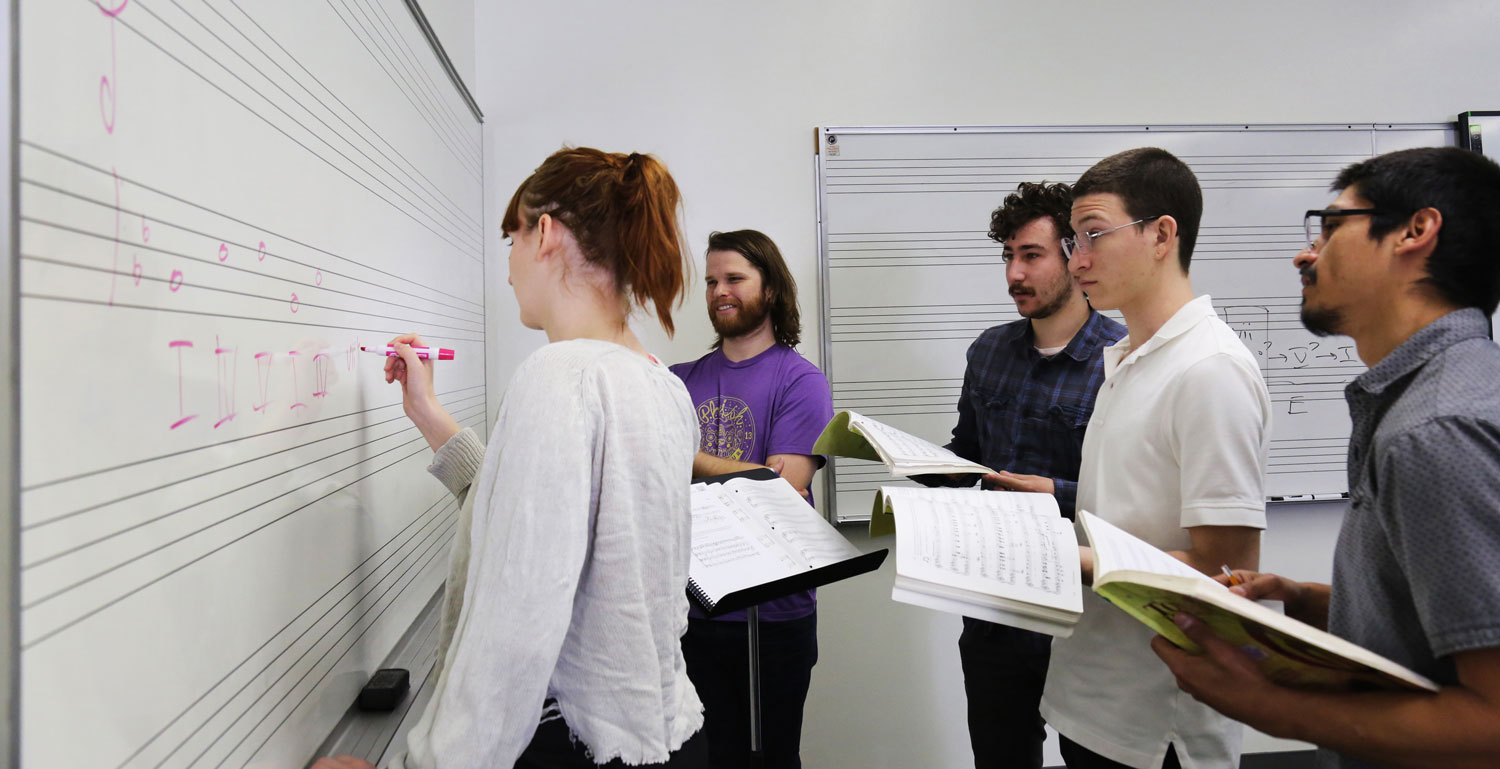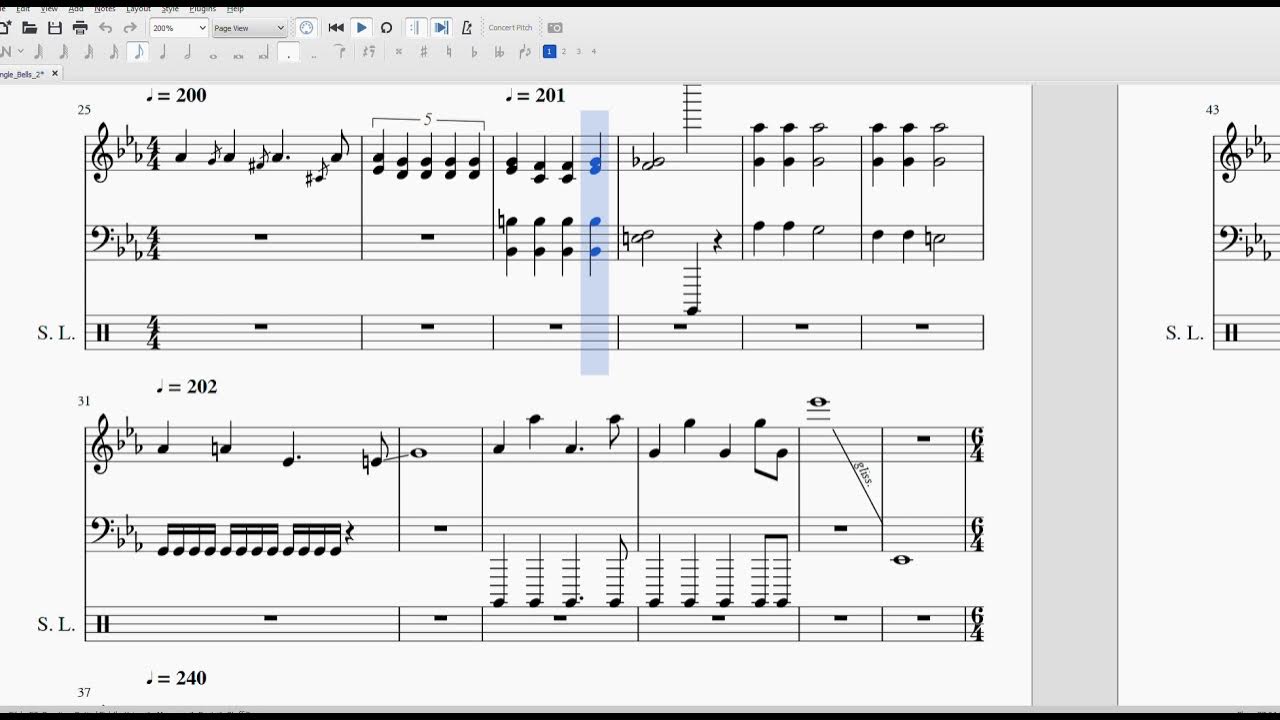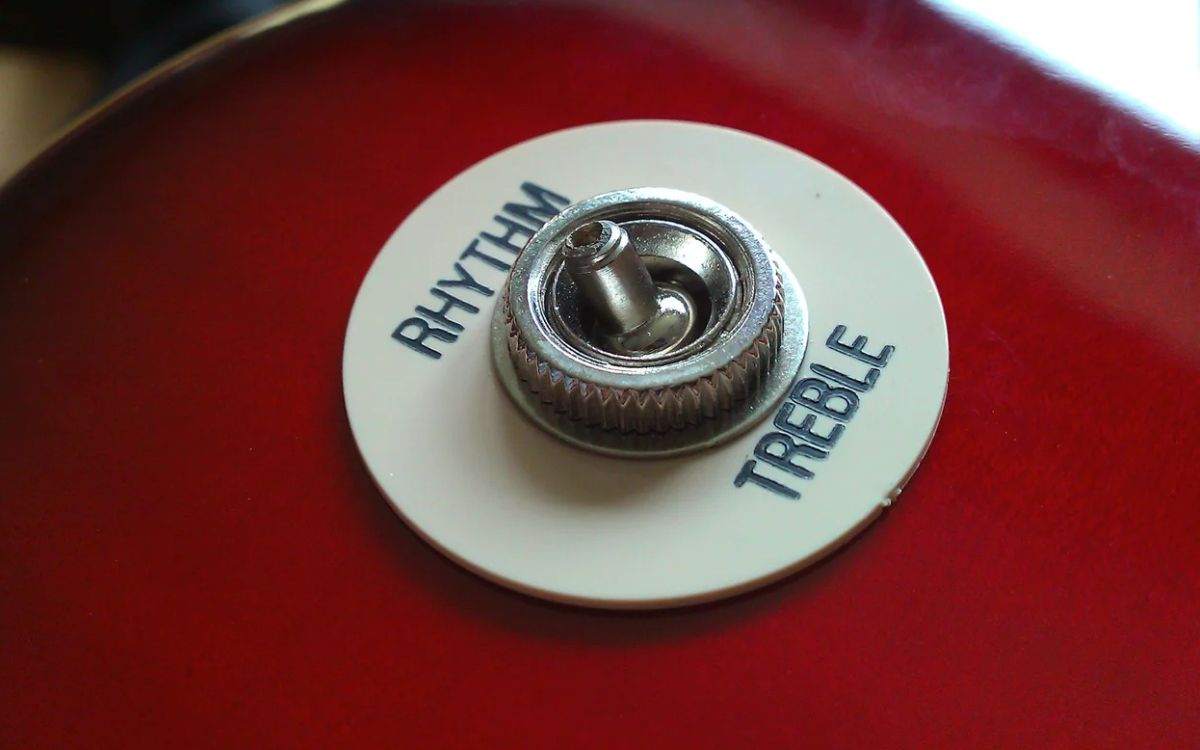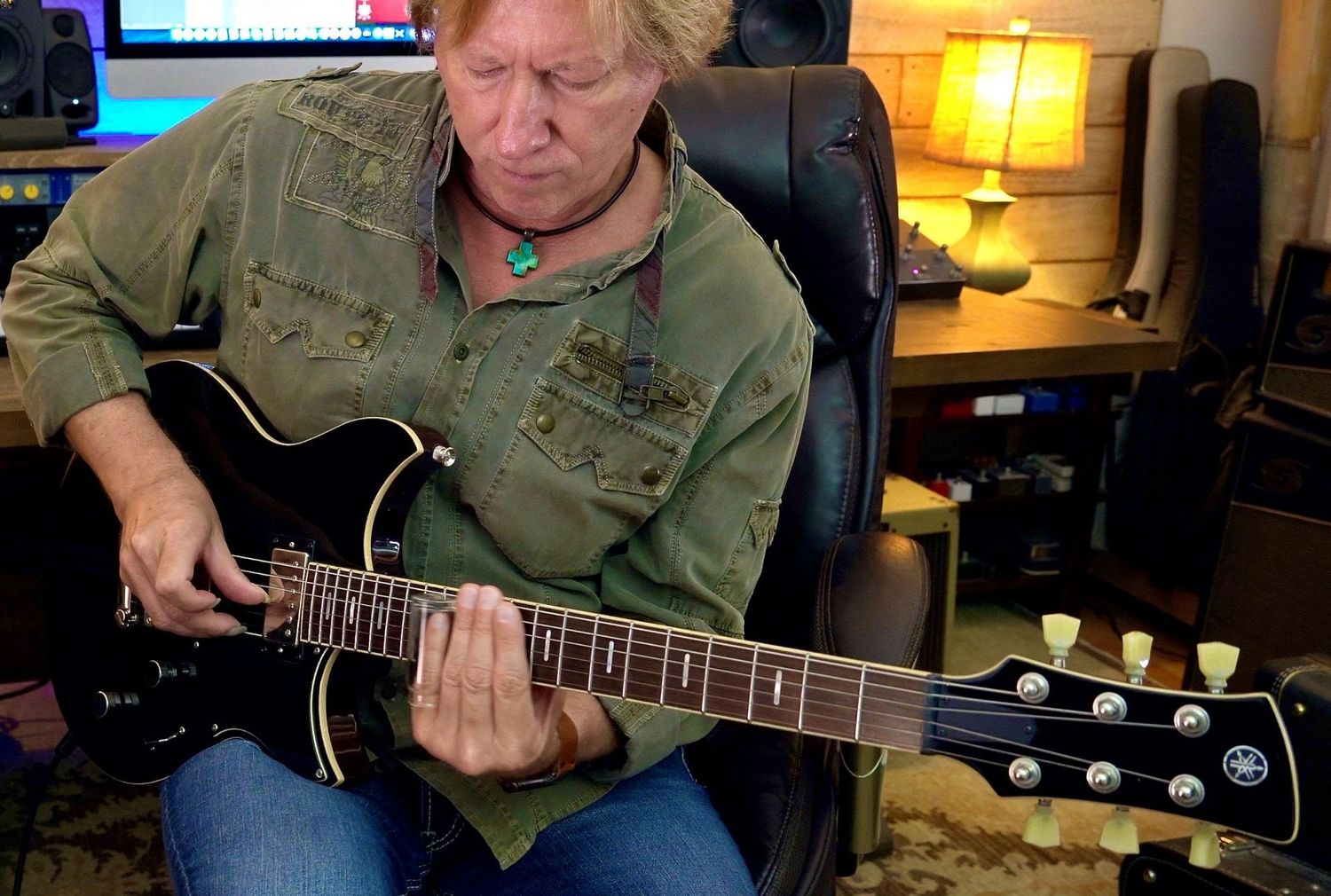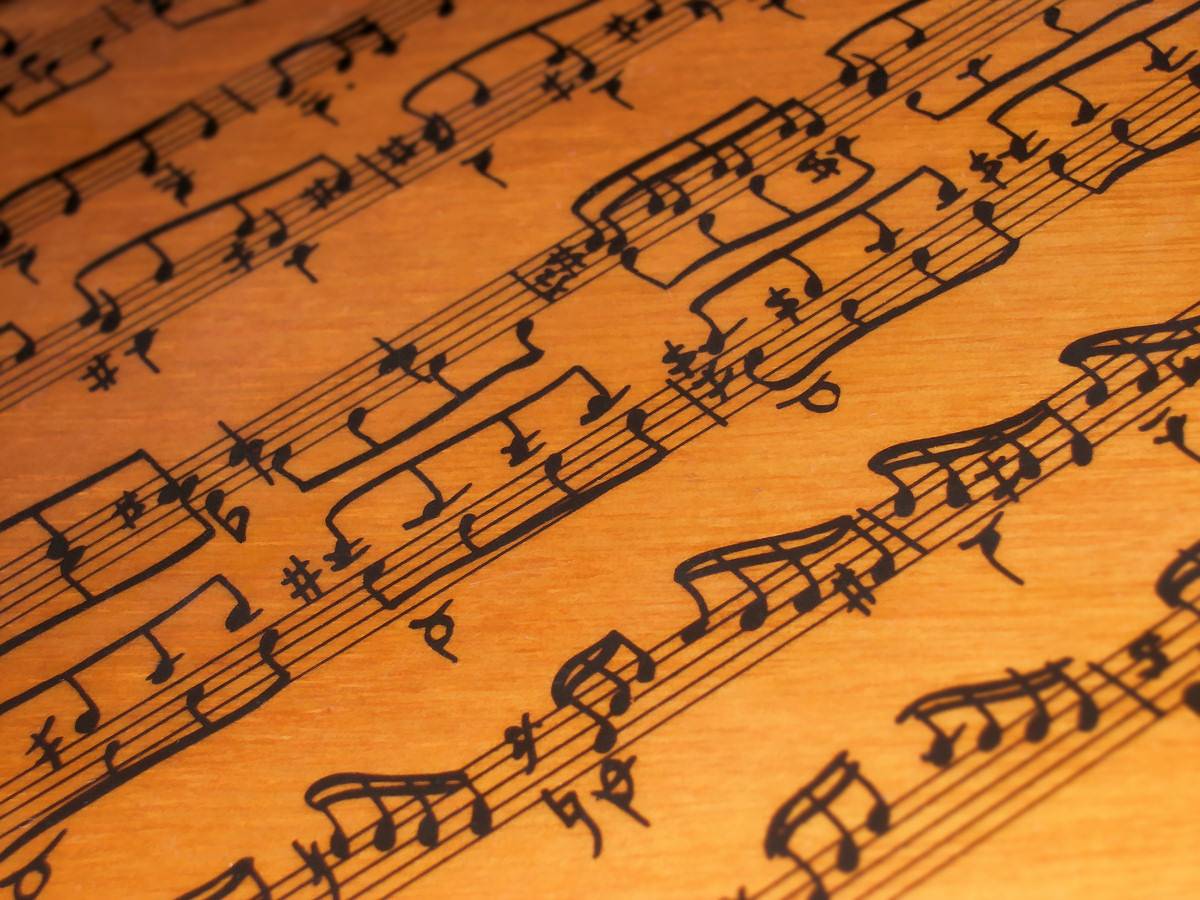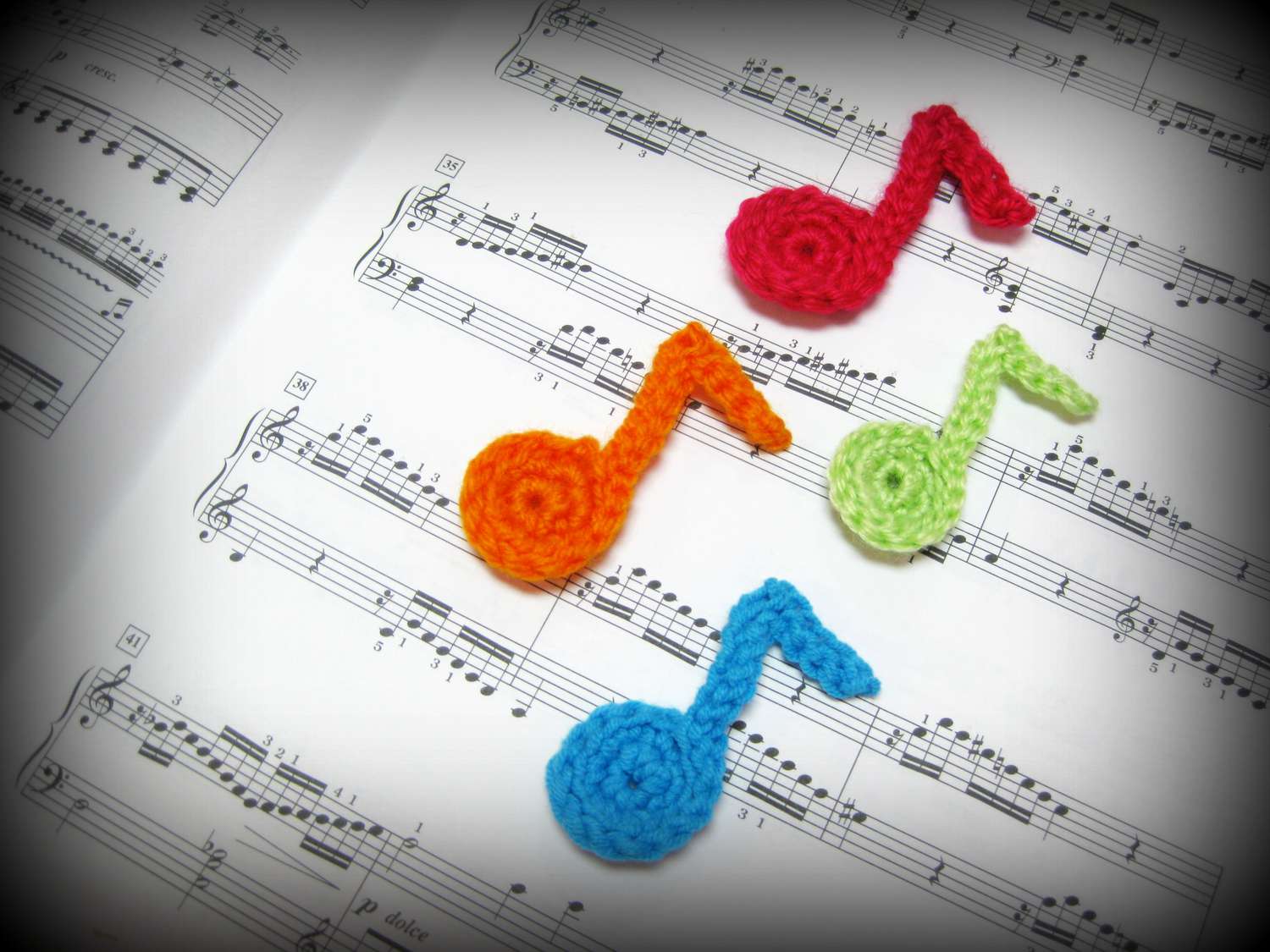Home>Production & Technology>Music Theory>How Do You Write The Rhythm In Music Theory
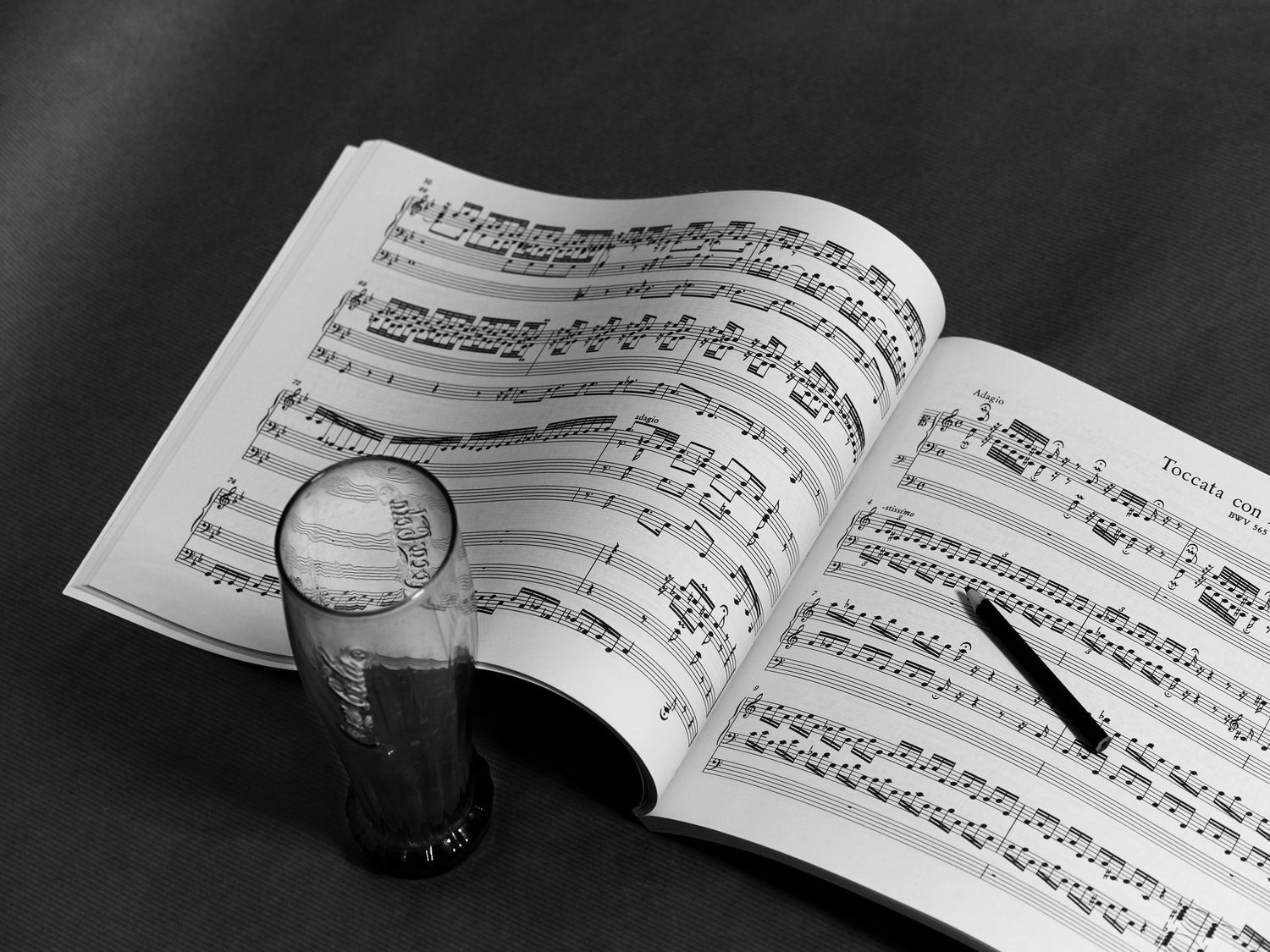

Music Theory
How Do You Write The Rhythm In Music Theory
Published: January 31, 2024
Learn how to write the rhythm in music theory and enhance your understanding of music composition. Discover the essentials of music theory and unlock your creative potential.
(Many of the links in this article redirect to a specific reviewed product. Your purchase of these products through affiliate links helps to generate commission for AudioLover.com, at no extra cost. Learn more)
Table of Contents
Introduction
Music theory is a fascinating field that delves into the structure and principles of music. It encompasses various elements, including melody, harmony, and rhythm. While melody and harmony capture our attention with their melodic and harmonic progressions, it is rhythm that provides the backbone and pulse of a piece of music.
In music theory, rhythm refers to the arrangement of sounds and silences in time. It is what makes us tap our feet, nod our heads, and feel the groove. Understanding rhythm is crucial for musicians of all levels, as it lays the foundation for playing in time and creating musical cohesion.
Rhythm is not just limited to the beat or tempo of a song; it encompasses a wide range of components that contribute to the overall rhythmic feel and expression. From note values and time signatures to rests and phrasing, each aspect plays a significant role in shaping the rhythmic character of a musical piece.
In this article, we will explore the fundamental concepts of rhythm in music theory, breaking down its components and exploring how they work together. Whether you are an aspiring musician, a music student, or simply a music lover interested in diving deeper into the mechanics of rhythm, this article will provide you with valuable insights and knowledge.
Understanding Rhythm in Music Theory
Rhythm is the heartbeat of music. It is the organization of time and sound that gives a composition its groove and momentum. Understanding the basics of rhythm is essential for musicians and composers, as it allows them to effectively communicate and perform music.
At its core, rhythm is a pattern of durations and accents that create a sense of forward motion. It is what makes us feel the pulse and move to the beat. In music theory, rhythm is represented by various symbols and notations that indicate the duration and timing of notes and rests.
One key element of rhythm is the concept of beat. The beat is the underlying pulse that drives the music forward. It is like the steady ticking of a clock that keeps time. Each beat is typically divided into equal parts called subdivisions, which can be represented as notes of different durations.
Another important aspect of rhythm is meter. Meter refers to the organization of beats into recurring groups. This is indicated by the time signature at the beginning of a musical piece. Common time signatures include 4/4, 3/4, and 6/8, among others. The top number of the time signature represents the number of beats in a measure, while the bottom number indicates the note value that receives one beat.
Syncopation is another concept related to rhythm. It involves accenting or emphasizing weak beats or offbeats, creating a sense of musical tension and rhythmic complexity. Syncopation adds a playful and unexpected element to music, giving it a unique and vibrant character.
Understanding the different note values is crucial for interpreting rhythm. Notes can be classified into whole notes, half notes, quarter notes, eighth notes, and so on. Each note value represents a specific duration, and their combinations form rhythmic patterns and phrases.
Rests are integral to rhythm as well. Rests represent moments of silence within a musical piece. They have the same durations as notes and contribute to the overall rhythmic structure by providing moments of release and contrast to the sounds.
As musicians become more proficient in understanding rhythm, they can start experimenting with creating their own rhythmic patterns and variations. This allows for the expression of individual style and artistic interpretation.
Overall, rhythm plays a vital role in music theory. It gives music its pulse, movement, and dynamics, and learning to navigate and master its elements opens up a world of possibilities for musicians and composers.
Components of Rhythm
Rhythm in music theory consists of several components that work together to create a cohesive and dynamic musical experience. Let’s explore the key components that shape the rhythmic structure of a piece of music:
- Beat: The beat is the underlying pulse of a musical composition. It provides a regular and steady tempo that drives the music forward. The beat is typically felt as the foot-tapping or head-bobbing instinct that we have when listening to music.
- Meter: Meter refers to the organization of beats into recurring patterns or groups. It is denoted by the time signature at the beginning of a piece of music. Common time signatures include 4/4 (four beats per measure), 3/4 (three beats per measure), and 6/8 (six beats per measure). Meter helps establish the rhythmic framework and provides a sense of structure and stability.
- Note Values: Note values indicate the duration of each sound or note. They are represented by different types of notes, such as whole notes, half notes, quarter notes, eighth notes, and so on. Each note value has a specific duration relative to the beat and contributes to the overall rhythmic pattern of a composition.
- Rests: Rests are silent moments in music that create pauses or breaks between sounds. They have durations equivalent to different note values and contribute to the overall rhythmic structure. Rests are as important as notes themselves, as they provide contrast, emphasis, and moments of silence within a musical piece.
- Syncopation: Syncopation occurs when the emphasis or accent falls on weak beats or offbeats. It adds a layer of complexity and rhythmic tension to the music, creating an interesting and captivating rhythmic feel. Syncopation can be achieved through accents, tied notes, and rhythmic patterns that play against the expected pulse.
- Tempo: Tempo refers to the speed or pace at which a piece of music is performed. It greatly influences the rhythmic character and energy of a composition. Different tempos evoke different moods and emotions, and musicians must be aware of tempo changes and variations to maintain the intended rhythmic flow.
Understanding and manipulating these components allows musicians to create intricate rhythms, variations, and grooves within their compositions. By combining different note values, rests, and syncopation techniques, musicians can craft unique and compelling rhythmic patterns that engage and captivate their audience.
Basic Note Values
In the realm of music theory, note values play a crucial role in defining the duration of sounds within a composition. They provide a framework for musicians to understand and interpret rhythmic patterns accurately. Here are the basic note values commonly used:
- Whole Note: Represented by an open circle, the whole note is the longest note value. It lasts for four beats in a 4/4 time signature.
- Half Note: The half note is represented by a solid circle with a stem. It lasts for two beats in a 4/4 time signature.
- Quarter Note: A quarter note is a solid circle with a stem and a flag. It lasts for one beat in a 4/4 time signature.
- Eighth Note: The eighth note is a solid circle with a stem and one flag. It lasts for half a beat in a 4/4 time signature.
- Sixteenth Note: Represented by a solid circle with a stem and two flags, the sixteenth note lasts for one-fourth of a beat, or a quarter of a beat, in a 4/4 time signature.
Note values can also be altered by adding dots, which increase the duration of the note. A dot placed after a note increases its duration by half. For example, a dotted half note is equal to three beats, while a dotted quarter note is equal to one and a half beats.
Understanding note values allows musicians to accurately interpret the rhythmic patterns written in sheet music. By combining different note values and rests, musicians can create rhythms that convey a specific groove and feel. It is essential to be familiar with note values and their corresponding durations to play in time and maintain the intended rhythmic structure of a composition.
As musicians progress, they may encounter more complex note values, such as triplets or thirty-second notes. These further subdivide the beat and add intricacy to rhythmic patterns. However, mastering the basic note values is the first step towards developing a solid foundation in rhythm and musical performance.
Time Signatures
Time signatures are an essential component of music notation that indicate the organization of beats within a musical composition. They provide a framework for musicians to interpret and perform the rhythmic structure of a piece. Time signatures are represented by two numbers written at the beginning of a staff.
The top number in a time signature denotes the number of beats in each measure, while the bottom number represents the note value that receives one beat. The most common time signature is 4/4, also known as “common time.” In 4/4, the top number indicates four beats per measure, and the bottom number represents the quarter note as the beat unit.
Other commonly used time signatures include 2/4 (two beats per measure), 3/4 (three beats per measure), and 6/8 (six beats per measure). Each time signature imparts a distinct rhythmic feel and influences how the music is performed.
Let’s explore some commonly encountered time signatures:
- 4/4 Time Signature: Also known as common time or “four-four time,” this time signature is widely used in various genres of music. It consists of four beats per measure, with the quarter note receiving one beat. It creates a steady and predictable rhythmic feel.
- 3/4 Time Signature: This time signature is commonly associated with waltzes and is often used in dance music. It consists of three beats per measure, with the quarter note still receiving one beat. This time signature gives a waltz its characteristic 1-2-3, 1-2-3 feel.
- 6/8 Time Signature: This time signature is frequently found in genres like jazz, blues, and classical music. It consists of six beats per measure, with the eighth note receiving one beat. 6/8 time signature provides a compound feel and is often associated with a swinging or triplet-based groove.
Time signatures provide a musical roadmap for performers, enabling them to maintain a consistent rhythm throughout a composition. By paying attention to the time signature, musicians can accurately count beats, understand the rhythmic structure, and execute their performance with precision.
It’s important to note that changes in time signatures can occur within a piece of music, indicating shifts in the rhythmic feel or meter. Musicians must be aware of these changes and adapt their playing accordingly to maintain the intended rhythmic flow.
Overall, time signatures are an integral part of music theory that help shape the rhythmic structure of a composition. By understanding and interpreting time signatures, musicians can bring life and coherence to the rhythm of a piece and deliver a captivating musical experience.
Tempo and Timing
Tempo and timing are crucial aspects of rhythm that greatly influence the overall feel and character of a musical piece. They govern the speed and pace at which the music is performed, adding depth and expression to the rhythmic structure.
Tempo refers to the speed or pace of a musical composition. It is indicated by a specific Italian term or a metronome marking, which indicates the beats per minute (BPM). Common tempo markings include adagio (slow), andante (moderate), allegro (fast), and presto (very fast). The tempo sets the overall mood and energy level of a piece, impacting the rhythmic interpretation and emotional impact.
Timing, on the other hand, deals with the precision and accuracy of executing the rhythmic patterns. It involves the skill of playing or performing in time, aligning with the beat and maintaining a consistent rhythm. Proper timing ensures that the notes and rests are executed at the desired duration and that the overall rhythmic structure remains intact.
Musicians learn to internalize the tempo and timing of a piece through practice and experience. They develop a sense of rhythmic intuition, allowing them to feel the natural flow and groove of the music. This internalized sense of timing allows musicians to synchronize with other performers and create a cohesive and unified sound.
Timing can also involve the use of rubato, which is a flexible approach to tempo. Rubato allows for expressive deviations from the strict tempo, adding subtle variations and nuances to the music. This technique is commonly used in expressive and emotionally charged performances, allowing the musician to shape the rhythm and timing dynamically.
To develop a strong sense of timing, musicians can utilize various tools and techniques. Metronomes, for example, provide a steady pulse and help practice playing in time. Counting out loud or using rhythmic syllables can also enhance timing skills by reinforcing the relationship between beats and subdivisions.
Ultimately, tempo and timing are integral components of rhythm that contribute to the overall musicality and impact of a performance. They add depth, emotion, and precision to the rhythmic structure and allow musicians to convey their intended rhythmic interpretation to the audience.
Dotted Notes and Syncopation
In the realm of music theory, dotted notes and syncopation are two important elements that add complexity, interest, and rhythmic variation to compositions. They create unexpected accents and tensions within the music, contributing to its dynamic and groovy nature.
A dotted note is a note with a dot placed next to it. The dot extends the duration of the note by half its original value. For example, a dotted half note is equal to three beats in 4/4 time, while a dotted quarter note is equal to one and a half beats. Dotted notes are commonly used in melodies and rhythmic patterns to create rhythmic interest and variety.
Syncopation, on the other hand, arises when the emphasis or accent falls on weak beats or offbeats. It involves shifting the emphasis from the expected strong beats to the weaker beats or subdivisions, creating a sense of rhythmic tension and unpredictability. Syncopation can be achieved through various techniques, such as accenting offbeats, using tied notes, or implementing rhythmic patterns that go against the expected pulse.
Syncopation adds flair, excitement, and a sense of forward motion to music. It can be found in various genres, including jazz, funk, Latin, and pop. Syncopated rhythms often make people want to tap their feet, dance, or groove along with the music.
Syncopation can be notated using syncopation symbols, such as ties, accents, or specific rhythmic patterns. These symbols help to indicate the desired emphasis and rhythmic articulation. It is important for musicians to interpret and execute syncopation accurately, as it greatly contributes to the overall rhythmic feel and expression of a piece.
Mastering the use of dotted notes and syncopation requires practice, listening, and a keen sense of rhythm. Musicians must develop an understanding of where to place accents, how to execute tied notes, and how to create rhythmic patterns that play against the expected pulse. By incorporating these rhythmic elements into their compositions, musicians can create music that is engaging, lively, and full of rhythmic vitality.
Rests and Silence
In music theory, rests play a fundamental role in shaping the rhythm of a composition. Rests represent moments of silence, providing the necessary pauses and breaks between sounds. They contribute to the overall rhythmic structure, allowing for contrast, emphasis, and musical phrasing.
Rests are symbols that indicate a specific duration of silence. Just like notes, rests also have different values, ranging from whole rests to sixteenth rests. Each rest value aligns with its respective note value in terms of duration.
Rests serve several purposes within a musical piece. They provide clarity in the overall rhythmic pattern, helping musicians interpret and perform the music accurately. Rests also create moments of release and contrast, allowing listeners to appreciate the sound when it returns after a period of silence.
Additionally, rests contribute to the musical phrasing and articulation. They help shape the phrases and give them a sense of structure by dividing the music into smaller sections. Rests can be used strategically to create suspense, tension, or anticipation, enhancing the overall musical expression.
Silence is a powerful tool in music. It allows the listener to absorb and reflect on the preceding sounds before moving on to the next musical idea. Silence gives music space to breathe, adding depth and emotional impact to the composition.
Intentional use of rests and silence in music requires an understanding of the desired musical effect. Composers and musicians can experiment with the placement and duration of rests to achieve particular rhythmic and expressive goals. By considering the overall musical context and the desired emotional impact, rests can be utilized to support the intended musical narrative.
It is worth noting that the duration and placement of rests can vary from piece to piece or even within a piece, depending on the composer’s creative choices. Musicians must carefully follow the rest indications written in sheet music to maintain the rhythmic integrity and ensure accurate rhythm execution.
Rests and silence are integral components of music, effectively shaping the rhythmic structure and enhancing the overall musical experience. By utilizing rests strategically, musicians can create dynamic and engaging compositions that captivate and resonate with the listeners.
Musical Phrasing and Articulation
In music theory, musical phrasing and articulation refer to the way musical phrases are shaped and executed, adding depth, expression, and nuance to a composition. They play a crucial role in conveying the intended emotion and musicality of a piece.
Phrasing involves grouping musical notes into coherent and expressive phrases. A musical phrase is a musical idea or segment that has a beginning, middle, and end. It is similar to a sentence or a paragraph in written language and helps give structure and organization to the music.
Phrases can be short or long, and they are often marked by cadences or pauses. By observing the phrasing indicated in the sheet music, musicians can shape their playing to emphasize the structure and flow of the musical phrases. They may use techniques like crescendo, decrescendo, or changes in articulation to highlight the beginnings and endings of phrases.
Articulation refers to the clarity and precision with which notes are played or sung. It encompasses techniques such as staccato (short and detached), legato (smooth and connected), accents (emphasis on a specific note), and more. Articulation adds dimension to the rhythmic structure, enhancing the overall musicality and expressiveness.
Articulation markings are indicated in sheet music using specific symbols and markings. These symbols guide musicians in executing the desired articulation style and ensure consistency and interpretation across different performances.
Both phrasing and articulation contribute to the interpretation and expression of a musical piece. They allow musicians to convey the composer’s intended musical ideas, emotions, and storytelling. Each musician may interpret and execute phrasing and articulation differently, adding their personal touch and musical sensitivity to the performance.
Developing a keen sense of musical phrasing and articulation involves careful listening, studying the score, and experimenting with different approaches. It requires understanding the overall structure and emotional content of the piece and finding ways to bring it to life through thoughtful and intentional execution.
By mastering the concepts of musical phrasing and articulation, musicians can craft performances that are not only technically proficient but also captivating and emotionally engaging. These elements breathe life into the composition, allowing the music to unfold with clarity, expression, and musicality.
Creating Rhythmic Patterns
Creating rhythmic patterns is a vital aspect of music composition and performance. It allows musicians to add their personal touch, creativity, and unique style to the music they play. By experimenting with different combinations of note values, rests, accents, and syncopation, musicians can develop captivating and compelling rhythmic patterns.
One approach to creating rhythmic patterns is to start with a basic pulse or beat and build upon it. This can be achieved by combining different note values, such as quarter notes, eighth notes, and sixteenth notes, to create rhythmic variations. By utilizing accents, syncopation, and rests strategically, musicians can add complexity and interest to their patterns.
Exploring different meters and time signatures can also inspire rhythmic patterns. By changing the grouping of beats and exploring asymmetrical meters, musicians can create unique rhythmic textures that stand out and capture the listener’s attention.
Another technique is to draw inspiration from various musical genres and styles. Each genre has its distinctive rhythmic traits, and incorporating elements from different genres can lead to the creation of exciting rhythmic patterns. For example, incorporating syncopated rhythms from jazz or African-inspired polyrhythms can infuse a composition with a lively and energetic feel.
Improvisation is another avenue for creating rhythmic patterns. Musicians can freely explore different rhythms and experiment with rhythmic ideas on their chosen instrument. This spontaneous approach often leads to surprising and innovative patterns that can be integrated into compositions.
Collaboration with other musicians can also inspire the creation of rhythmic patterns. By jamming or rehearsing together, musicians can generate rhythmic ideas collectively. This collaborative exploration can result in intricate and compelling rhythmic interplay between different instruments or voices.
Technology and digital tools offer further opportunities for generating rhythmic patterns. Drum machines, loopers, and music production software provide a platform for experimenting with various rhythms, layering them, and manipulating them in unique ways.
Lastly, it’s essential to listen to a wide range of music from different genres and cultures. By exposing oneself to diverse rhythmic traditions, musicians can broaden their rhythmic vocabulary and find inspiration for their own rhythmic creations.
Creating rhythmic patterns is an exciting and open-ended process that allows musicians to showcase their creativity and individuality. Whether composing original music, arranging existing pieces, or improvising, experimenting with various rhythmic combinations and techniques enables musicians to develop their own unique rhythmic language.
Conclusion
Understanding and harnessing the power of rhythm is crucial for musicians and music enthusiasts alike. The rhythmic foundation laid by music theory sets the stage for captivating performances and engaging compositions. By delving into the components of rhythm, such as note values, time signatures, tempo, and rests, musicians gain the tools necessary to create rhythmic patterns that mesmerize and resonate with listeners.
Through careful consideration of musical phrasing and articulation, musicians can add depth and expression to their performances, shaping the emotional and narrative aspects of the music. Dotted notes and syncopation provide innovative ways to add complexity and interest to rhythmic patterns, elevating compositions to new heights.
Rhythm is not confined to any particular genre or style. It spans across musical traditions, cultures, and time periods, unifying us through its universal language. Musicians have the freedom to explore and experiment with rhythm, creating unique patterns that reflect their creativity, personal style, and artistic vision.
As musicians continue to study and practice rhythm, they develop a keen sense of timing, allowing them to execute complex rhythmic structures with precision and accuracy. They learn to communicate and connect with other musicians, enhancing the overall cohesion and synergy of a musical ensemble.
Ultimately, rhythm breathes life into music, energizing and captivating listeners. It is the driving force that makes us want to tap our feet, sway to the beat, and dance with joy. By embracing the intricacies of rhythm through a solid understanding of music theory and exploring rhythmic possibilities, we unlock a world of creativity and musical expression.
So, whether you’re a seasoned musician, an aspiring music student, or simply someone who appreciates the power of rhythm, dive into the realm of music theory and explore the magical world of rhythm. Let it inspire you, guide your performances, and bring your musical ideas to life. With rhythm as your guide, you will embark on a journey that transcends boundaries and creates everlasting connections through the beautiful language of music.

